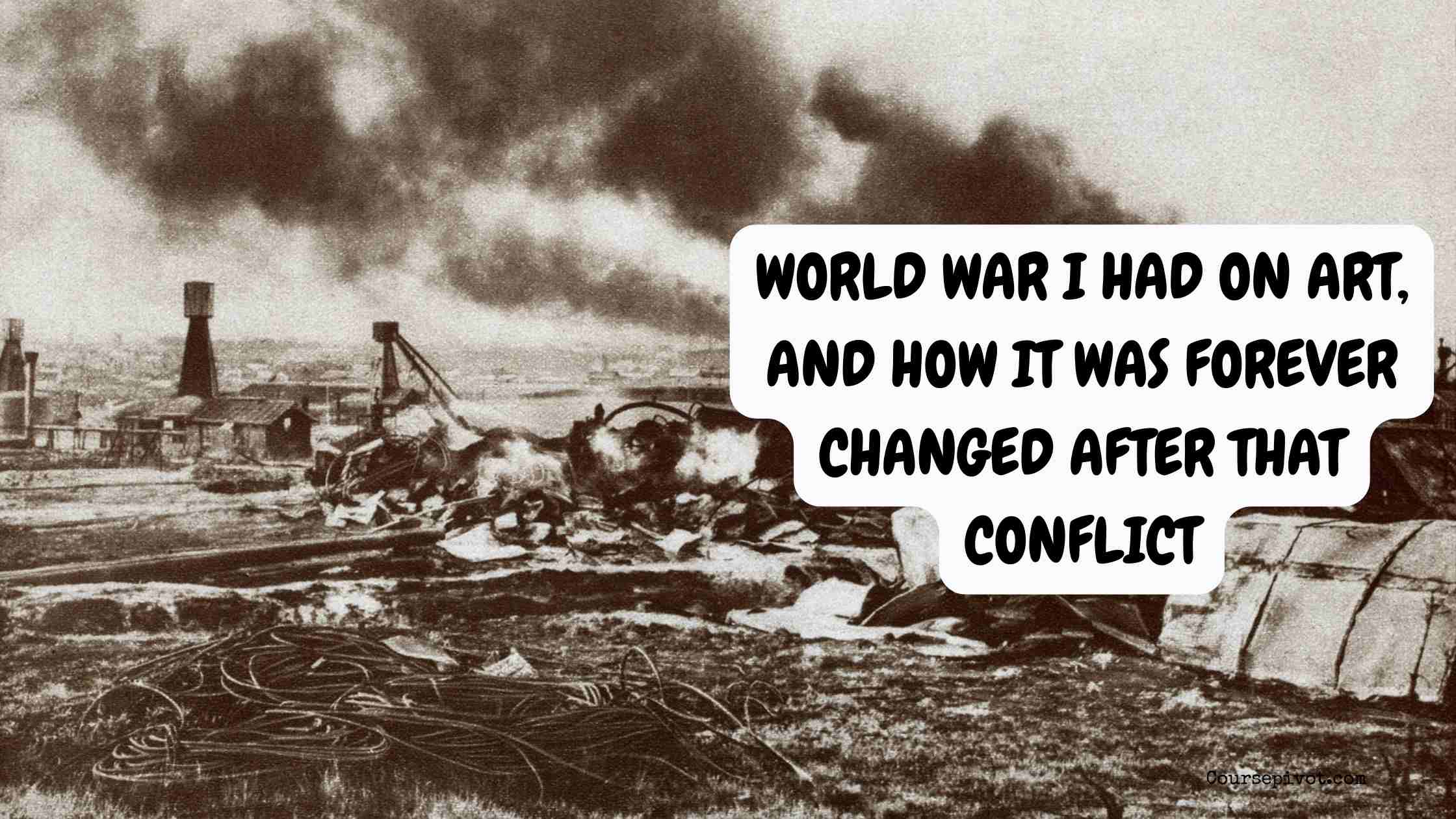
The Effect That World War I Had on Art, and How It Was Forever Changed After That Conflict
World War I was one of the most devastating events in modern history, and its effects rippled through every part of society—including art. Before the war, art often celebrated beauty, nature, and classical ideals. But after witnessing the horrors of trench warfare, death on a massive scale, and the collapse of old world orders, artists could no longer paint the world the same way.
The Rise of Expressionism and Dada
World War I deeply shocked the human spirit, and artists began expressing intense emotion and disillusionment. Movements like Expressionism emerged, focusing on inner turmoil and raw emotion rather than realistic representation.
Even more radically, the war gave birth to Dada, an anti-art movement that rejected logic and reason. Why? Because artists like Hugo Ball and Tristan Tzara believed that a world capable of such destruction no longer deserved rational art. They created chaotic, absurd, and often nonsensical works to reflect the broken world around them.
“Dada is not art, it is anti-art. Dada is the disgust of the world,” said one of the movement’s founders.
War’s Influence on Style and Materials
Artists abandoned traditional techniques. Instead, they used collage, mixed media, found objects, and harsh lines to express violence, fragmentation, and alienation. Everything familiar was now distorted.
- Read our blog on 3 Reasons Why America Lost the Vietnam War
Cubism, which had already begun before the war, took on darker and more political tones. And Surrealism, born shortly after the war, was a direct response to the trauma of the subconscious—something Sigmund Freud had written about and many soldiers experienced as shell shock.
The Artist as Witness
Before World War I, many artists were not political. But the war changed that forever. Soldiers like Otto Dix and George Grosz returned home and used their art to show the ugliness and brutality of war—disfigured veterans, ruined cities, and despair.
Their art was not meant to decorate walls. It was meant to shock, to protest, and to remember.
The Death of Idealism in Art
After World War I, the idea of art as something ideal or uplifting was challenged. Artists no longer believed that art had to be beautiful or noble. Instead, art became:
- A tool of protest
- A reflection of personal trauma
- A mirror to a broken society
This shift led directly into the modern art movements of the 20th century—Abstract Expressionism, Conceptual Art, and more.
World War I forever changed art. It shattered the old ways of painting, sculpting, and thinking. Art became darker, more experimental, and often more confrontational. It became a way to process trauma, challenge power, and search for meaning in a world that seemed to have lost it.
In the end, the war made art more human—flawed, raw, emotional, and unafraid to tell the truth.
Cite this article
You can copy and paste your preferred citation format below.
Martin, L. & Arquette, E.. (2025, May 26). The Effect That World War I Had on Art, and How It Was Forever Changed After That Conflict. Coursepivot.com. https://coursepivot.com/blog/describe-the-effect-that-world-war-i-had-on-art-and-how-it-was-forever-changed-after-that-conflict/



